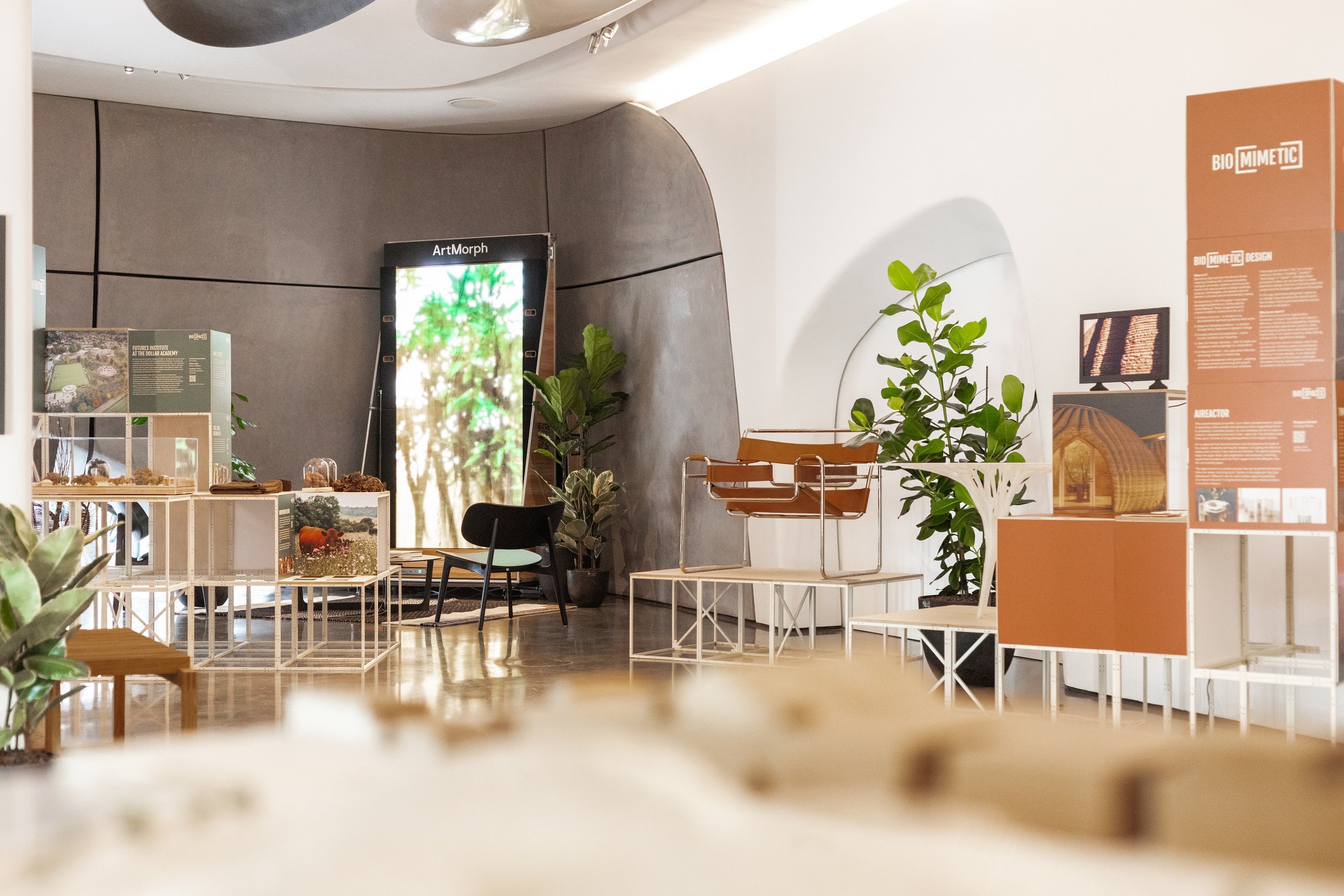CECOCECO
Q & A
August 2024
At Planted we aim to reconnect people and spaces with nature through the lens of biophilic design, recognising the profound mental and physical health benefits which can be derived from feeling part of the natural world. While seeking to promote businesses and products which enhance our connection with nature, we also explore new design concepts and ideas being utilised in the world of biophilic design. Through our Bio-Spaces exhibition at Roca London Gallery, running throughout the summer, we have showcased an array of different ideas and concepts to help people connect with nature, and we caught up with Claire Wang, Global Head of Sales at CECOCECO to learn more about their amazing ArtMorph screens, which have been such a feature of the show.
___
Why did CECOCECO chose to get involved with the Bio-Spaces exhibition at Roca London Gallery?
We’re deeply rooted in environmental sustainability. As a company passionate about biophilic innovations, we strive to design environments that bring people closer to nature. Our products are often inspired by natural elements and materials. The Roca London Gallery, known for bringing together architects and designers from around the world, is an exciting place for us to present ArtMorph.
How can CECOCECO’s products help people connect with nature?
CECOCECO’s products, particularly ArtMorph, help people connect with nature by bringing the serene and rejuvenating essence of the outdoors into indoor environments. These dynamic installations can display vivid, natural landscapes and elements, from flowing rivers and blooming flowers to shifting seasons, allowing individuals to experience the beauty and tranquility of nature in spaces where physical access to outdoor environments might be limited. This immersive experience not only enhances aesthetic appeal but also promotes well-being by incorporating natural elements into everyday spaces.
What is CECOCECO’s sustainability policy?
We’re deeply committed to sustainability across our operations. We focus on reducing environmental impact through energy-efficient designs, sourcing renewable materials, and adhering to strict ROHS standards for lead-free production. We also prioritise local sourcing to cut down on transportation emissions and implement rigorous waste and chemical management to ensure environmental safety. Our approach is comprehensive, aiming to integrate sustainability at every level of our operation.
Are your products designed with end of life in mind?
Our products are specifically designed to be durable and upgradable, reducing the need for frequent replacements. For example, the modular design of our ArtMorph installations allows users to update exteriors without discarding functional electronics, significantly extending the product’s usable life. We also employ easily recyclable materials to ensure that when our products do reach the end of their life, they can be disassembled and recycled with minimal environmental impact. This thoughtful end-of-life design is a crucial aspect of our commitment to sustainability.
How are they disposed off/recycled and what materials are they made of?
CECOCECO is currently in the process of developing a comprehensive plan and can provide more detailed information soon. Currently, our products are framed with lightweight carbon fiber. All materials comply with ROHS2.0 requirements, which mandate the elimination of harmful heavy metals and flammable materials. For non-standard parts, suppliers provide actual product samples, and our quality department sends the samples to a third-party laboratory for testing to confirm they meet ROHS2.0 standards.
Are you seeing more interest in businesses/architects designing office spaces with nature in mind?
Absolutely, we’ve noticed a significant increase in the number of businesses and architects focusing on nature-inspired office designs. This is likely because biophilic design has proven to improve employees’ mental and physical well-being, boost productivity and creativity, and satisfaction at work. CECOCECO embraces the principles of biophilic design. Our installations can bring natural landscapes like the Jurassic Coast or Swiss Alps into the office, helping employees feel more connected to nature and reducing stress or burnout.
Do you see an opportunity when it comes to the growing trend towards wellbeing in the workplace and biophilic design?
At CECOCECO, we see a significant opportunity in the rise of biophilic design for workplaces. Our ArtMorph installations, for example, can transform office environments by integrating natural visuals and sustainable materials. We also offer consulting services to help businesses seamlessly incorporate these elements into their existing spaces. Our focus on innovative, sustainable solutions positions us to lead in creating healthier, more engaging work environments that promote well-being and productivity.
How are you looking to improve CECOCECO’s environmental credentials and carbon footprint in the future?
Currently, we have several initiatives to improve CECOCECO’s environmental credentials and carbon footprint. These include reducing carbon emissions during transportation and providing company shuttles to cut down on community and business travel emissions. In the future, we plan to further improve CECOCECO’s environmental efforts by transitioning to electric forklifts and increasing our use of clean energy. We would also like to develop a comprehensive recycling strategy and explore alternatives to PC. Although current architectural requirements like fire-proofing and durability currently require the use of PC, our team is continuously seeking sustainable replacements.
Ends
For more information on Cecoceco visit www.cecoceco.com or see them at our Bio-Spaces exhibition running until the end of September at Roca London Gallery, Station Court, Townsmead Road, London SW6 2PY.
Open Monday - Friday 9am - 5.30pm or Saturday 11am - 5pm.
Henry Schmidt, Creative Director at Cecoceco will be joining the speaker line-up at the next Planted talk - Back to Nature on Wednesday 18 September at Roca London Gallery during London Design Festival. Find out more here




